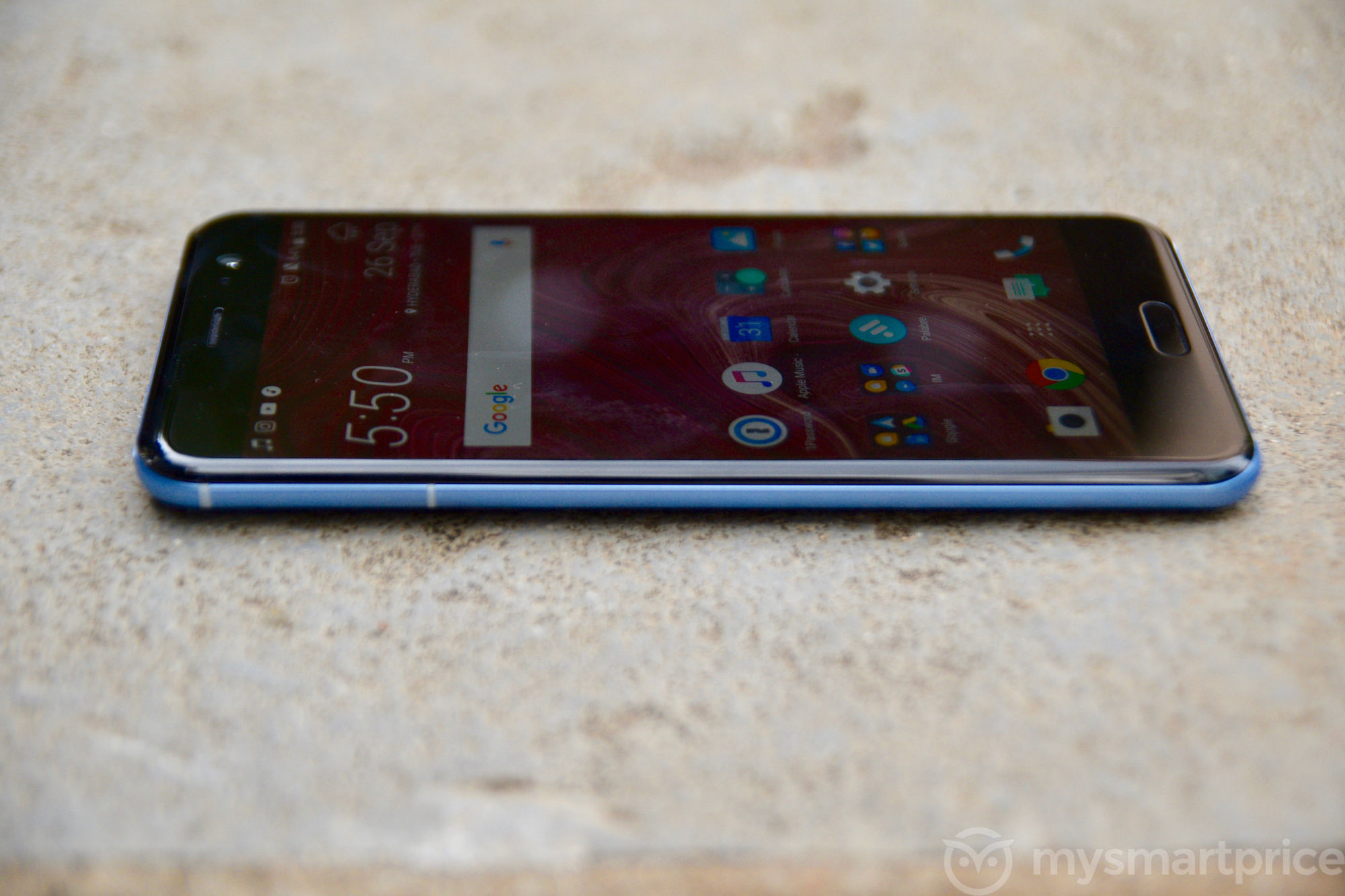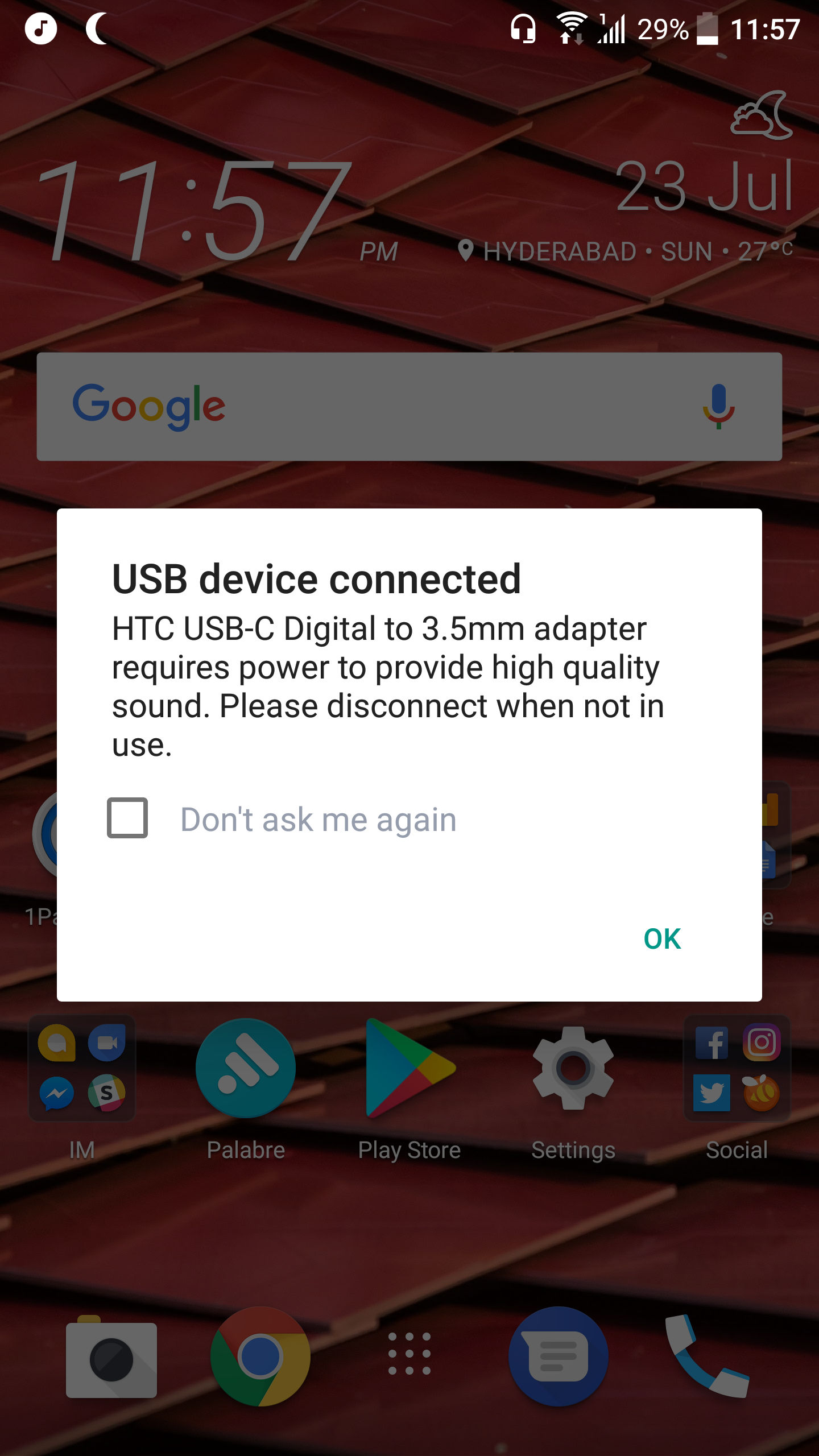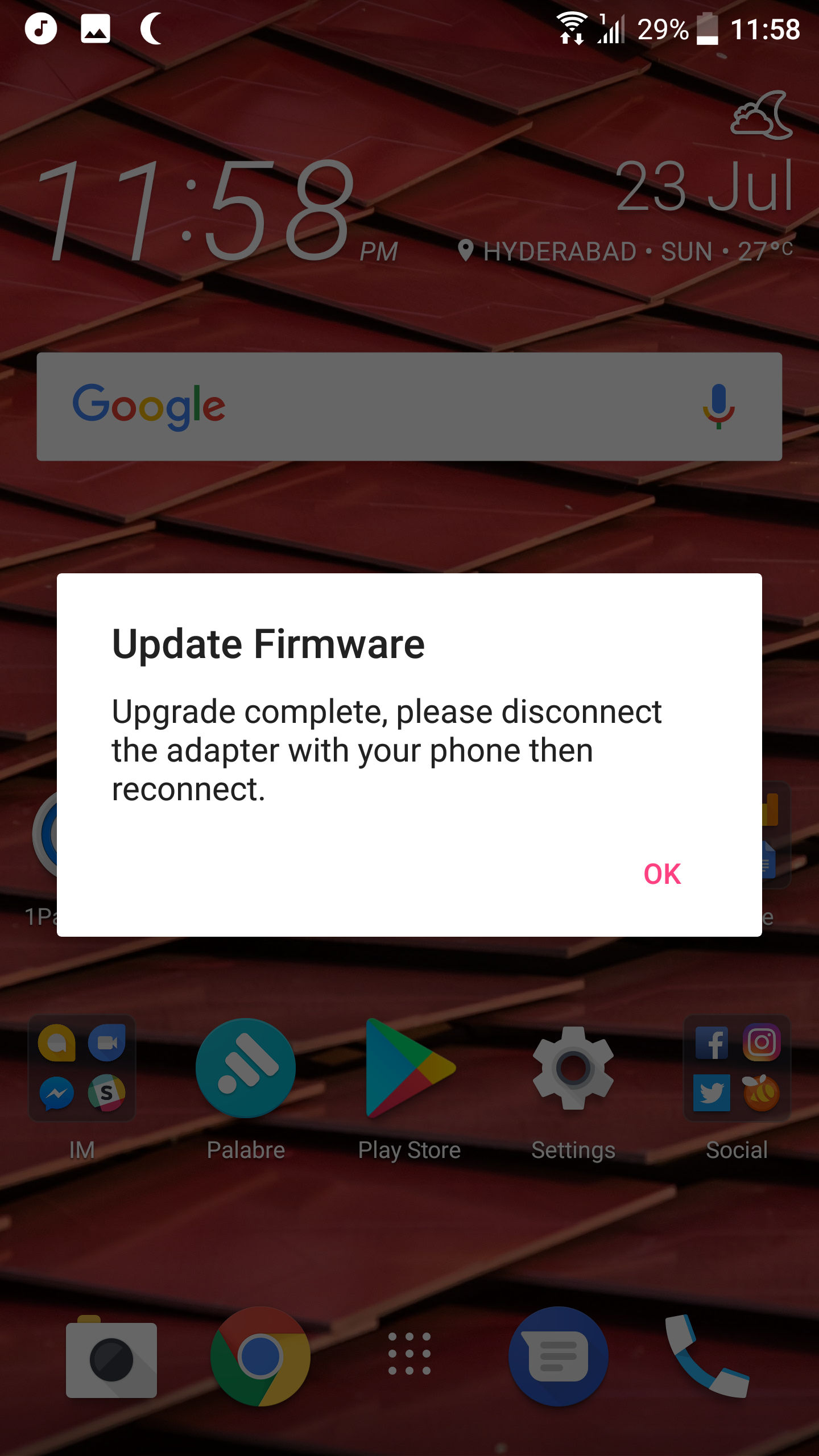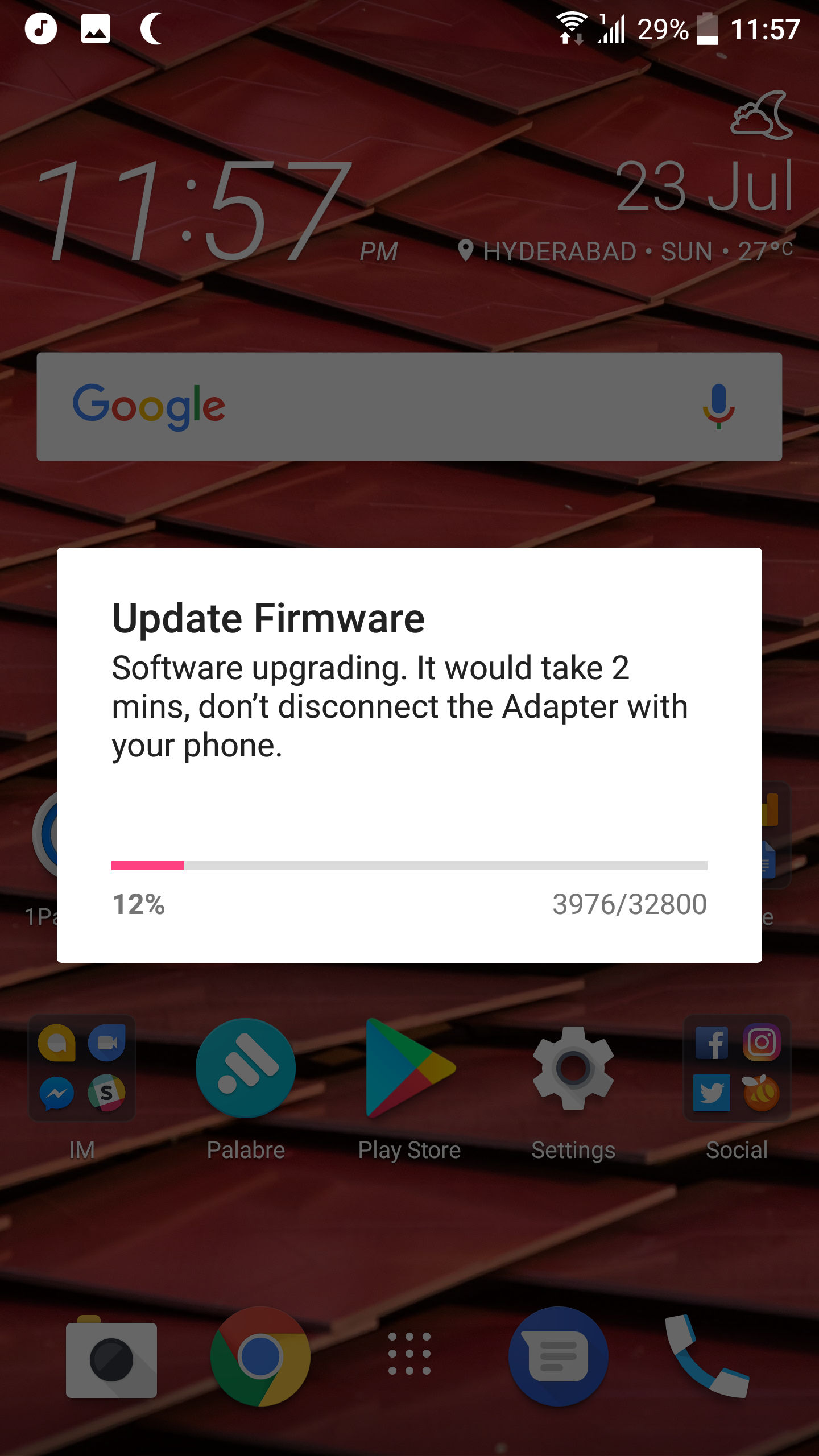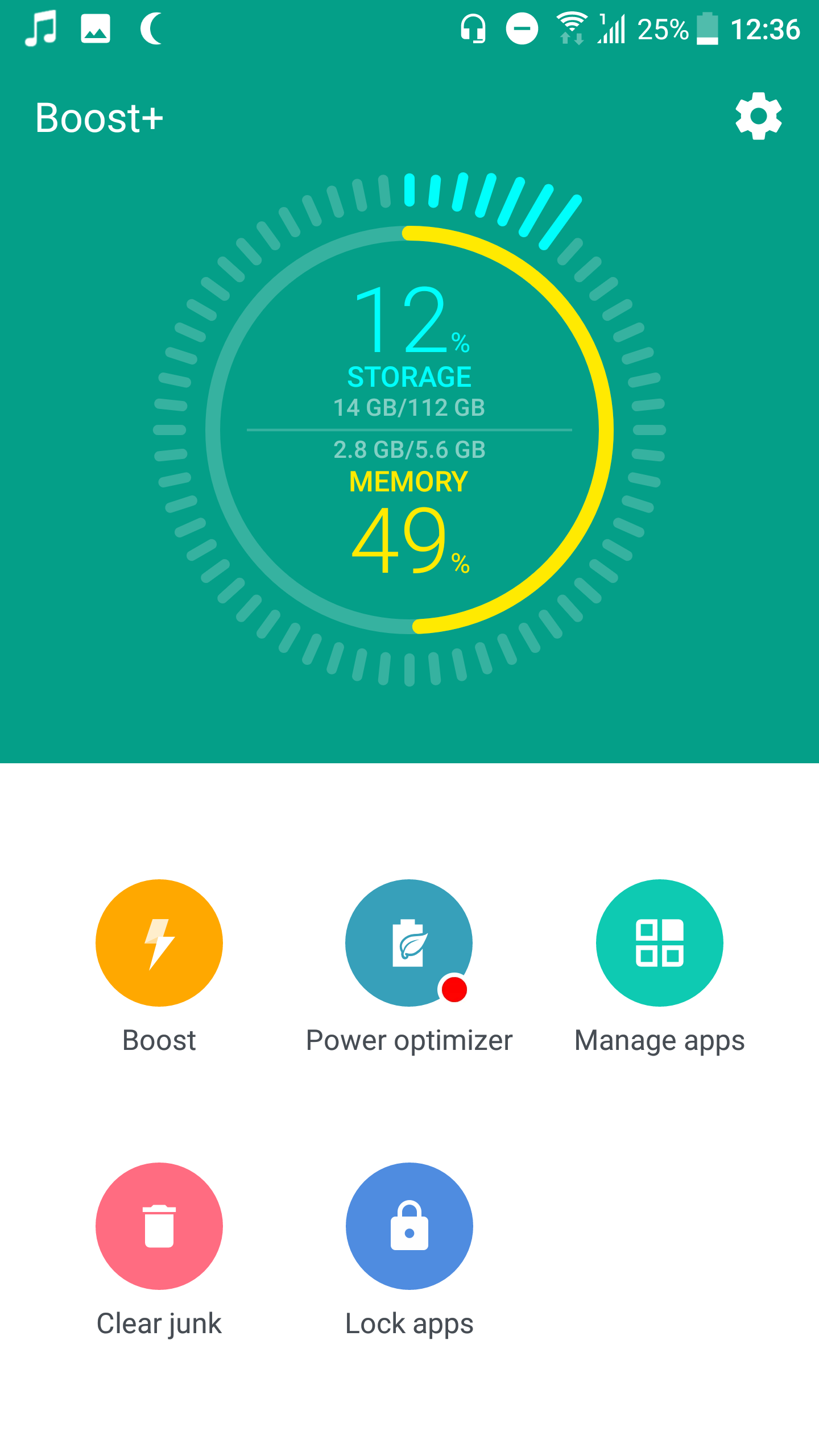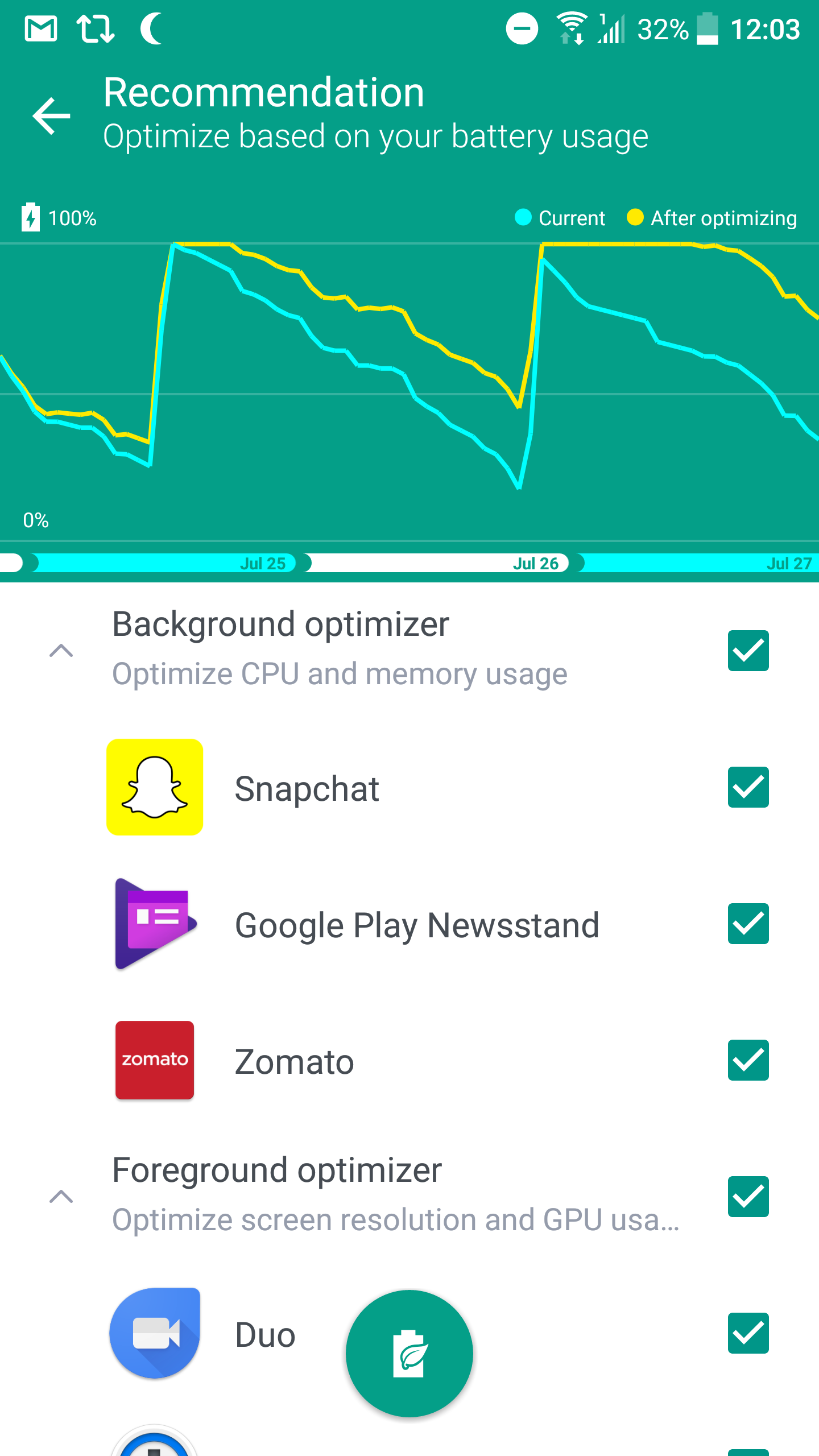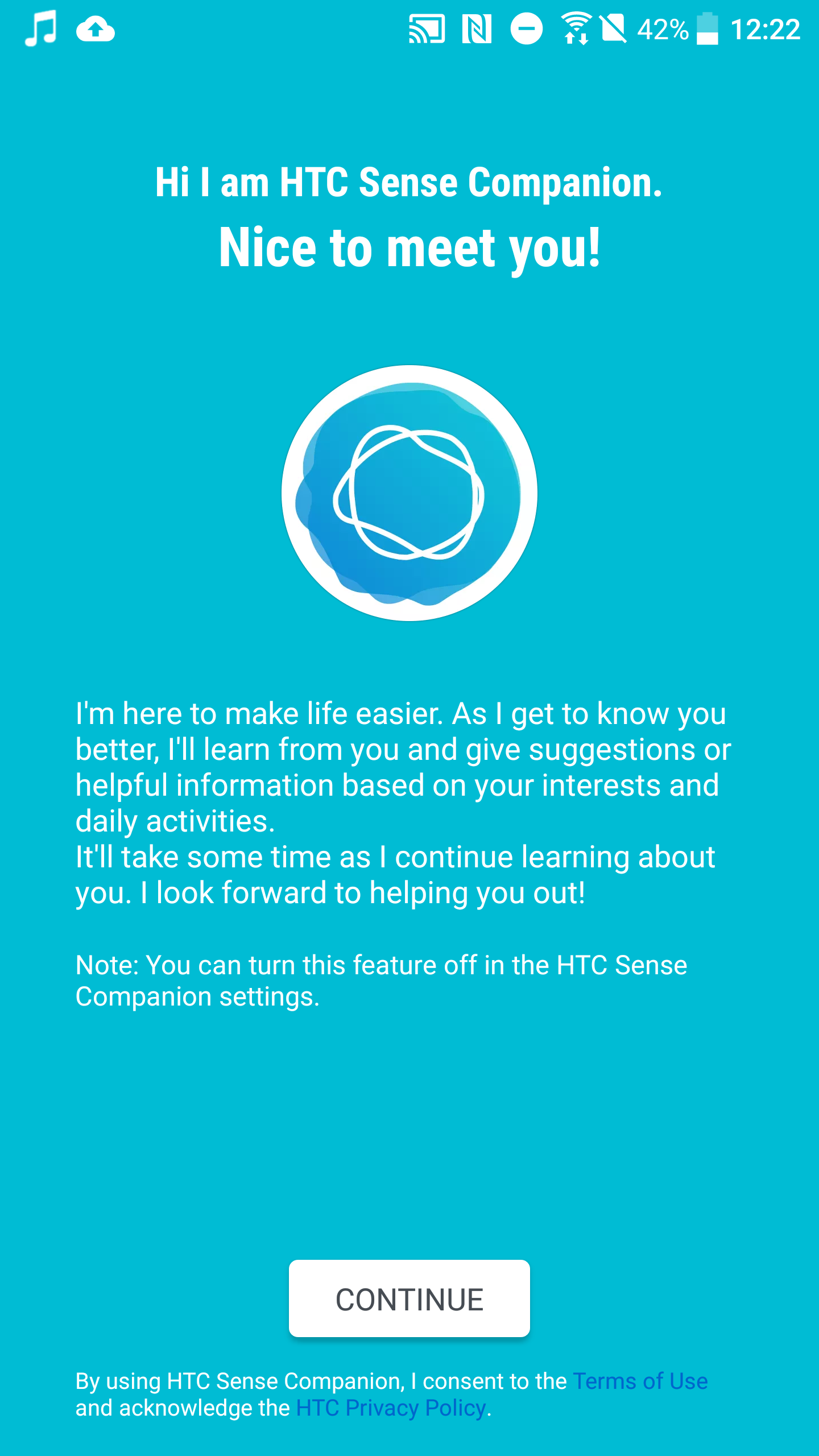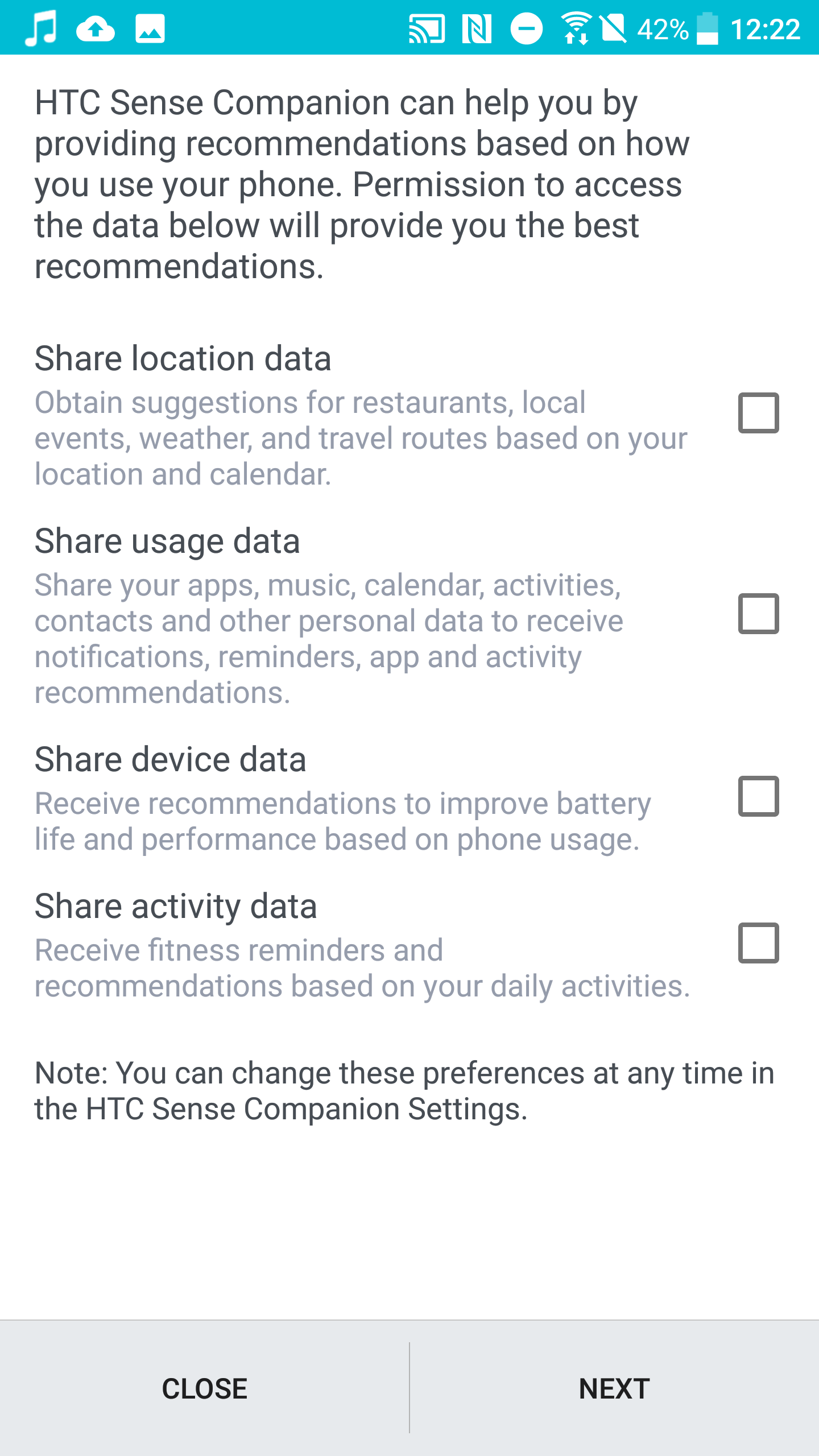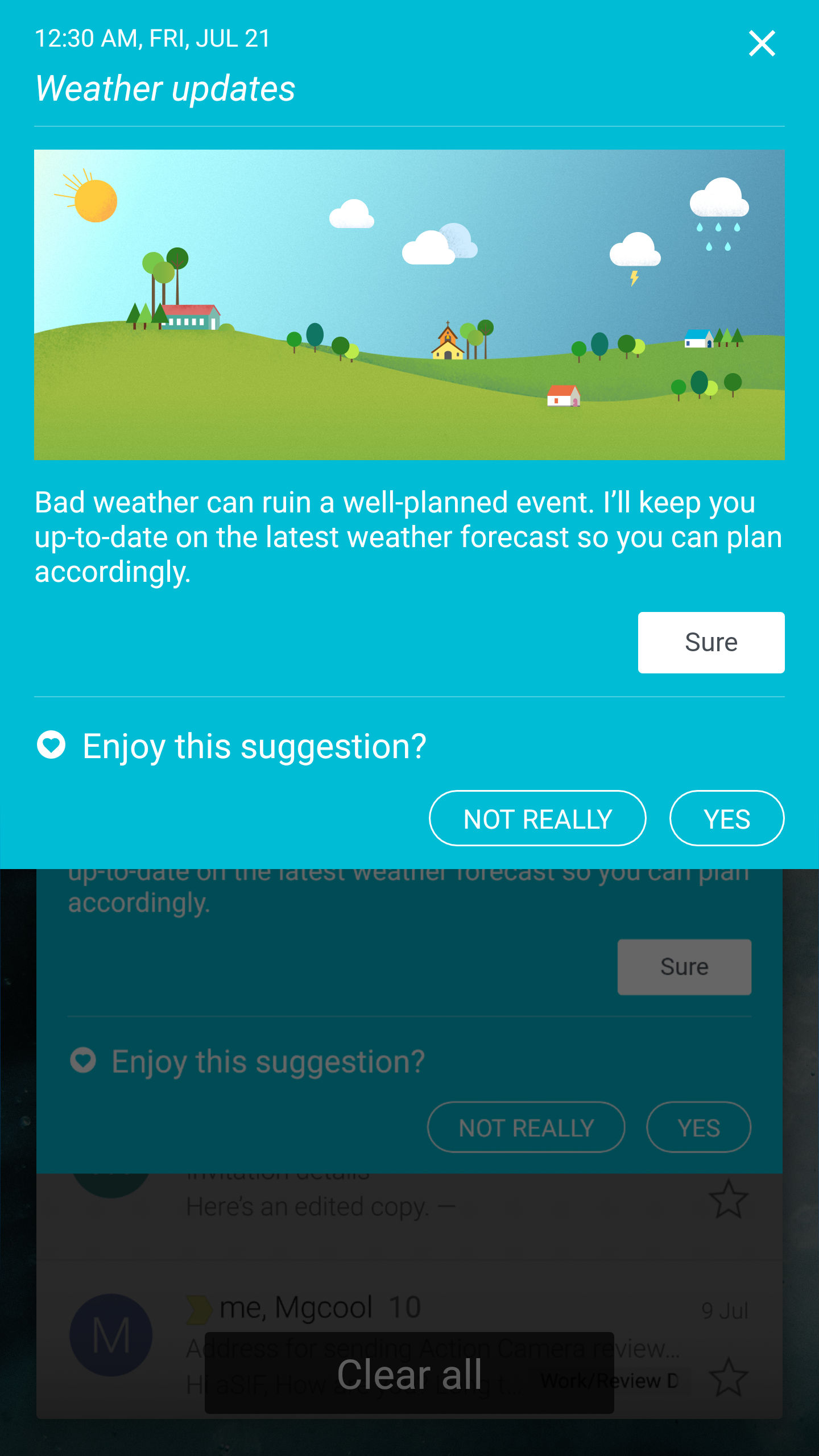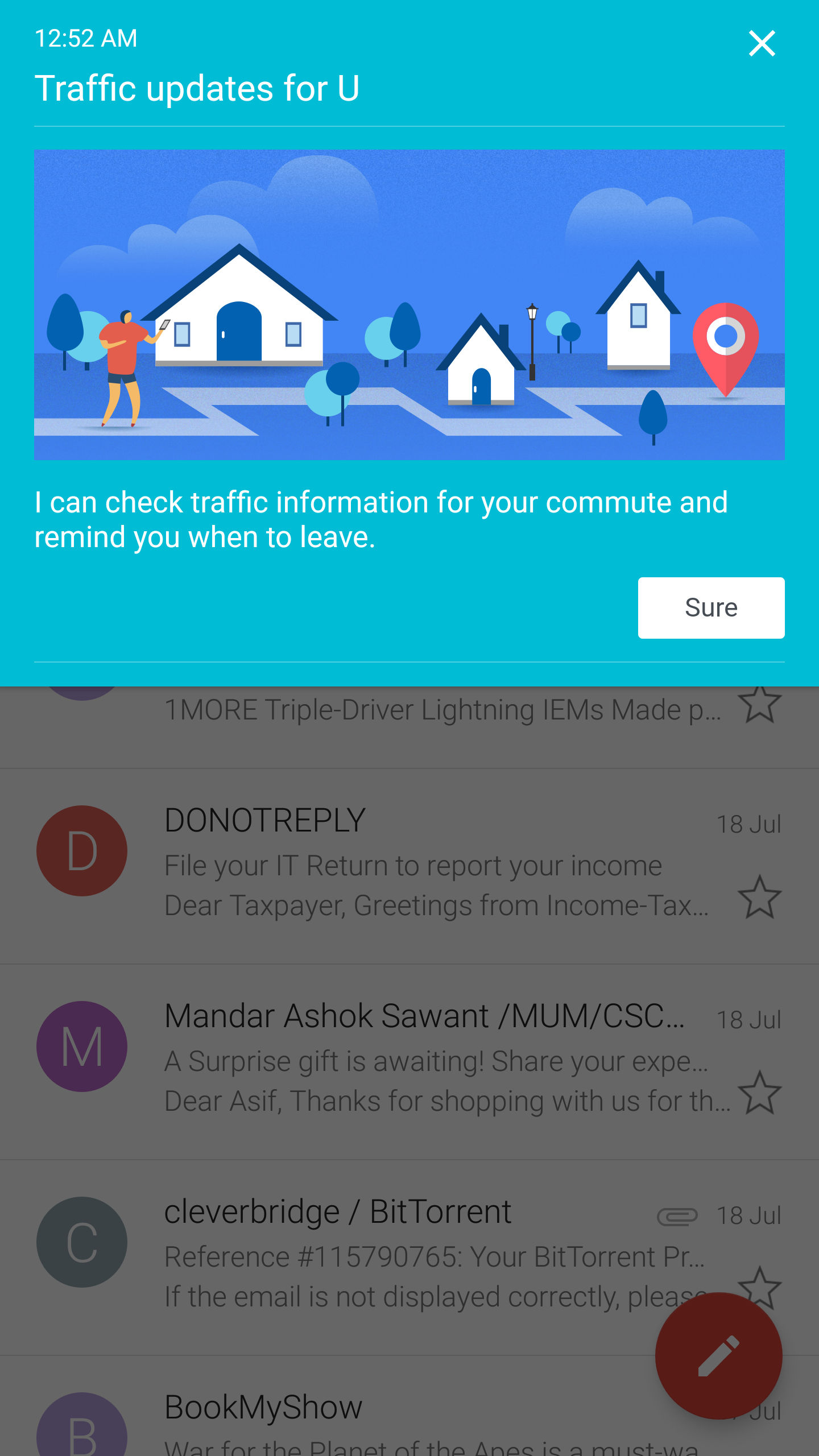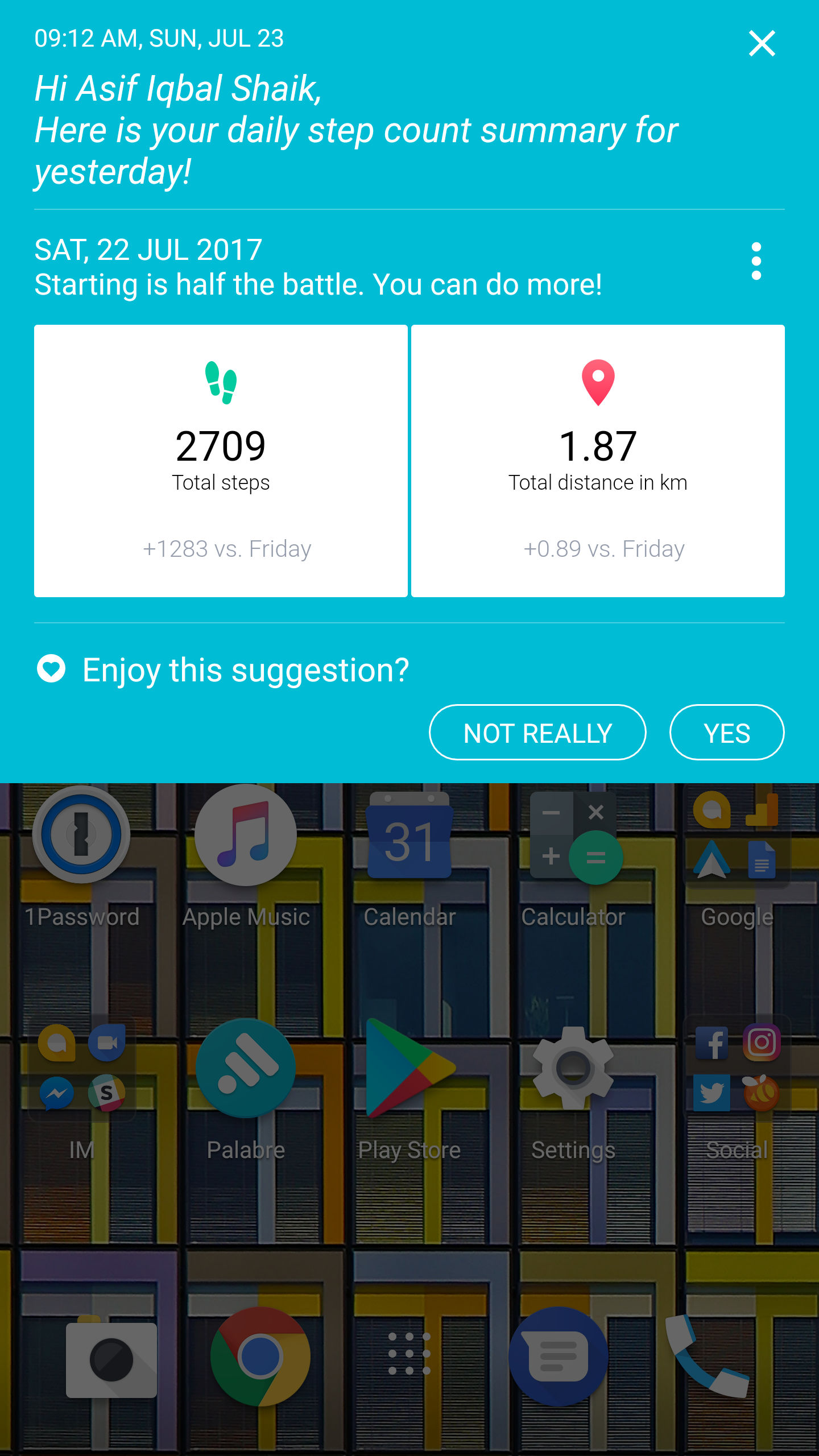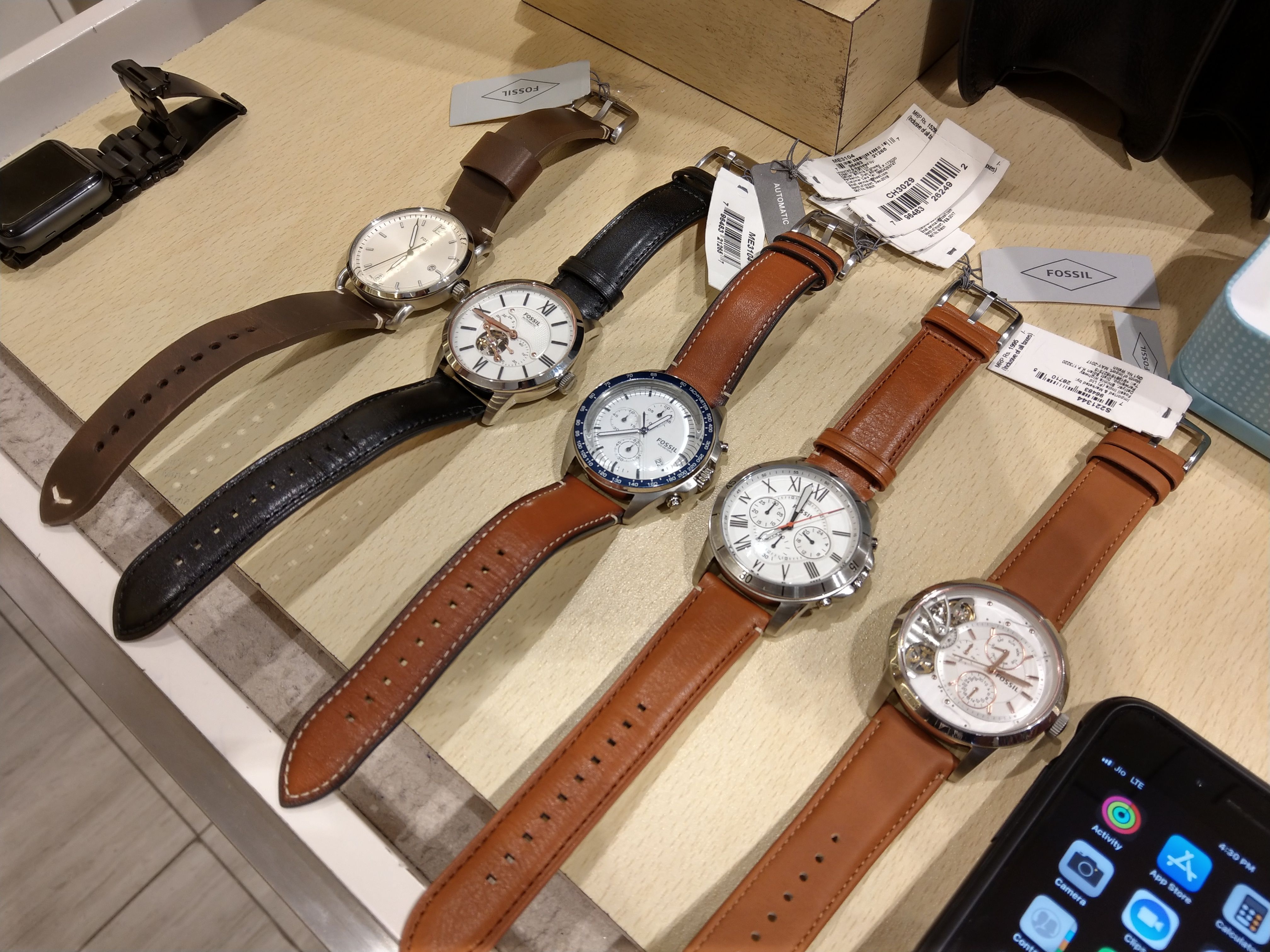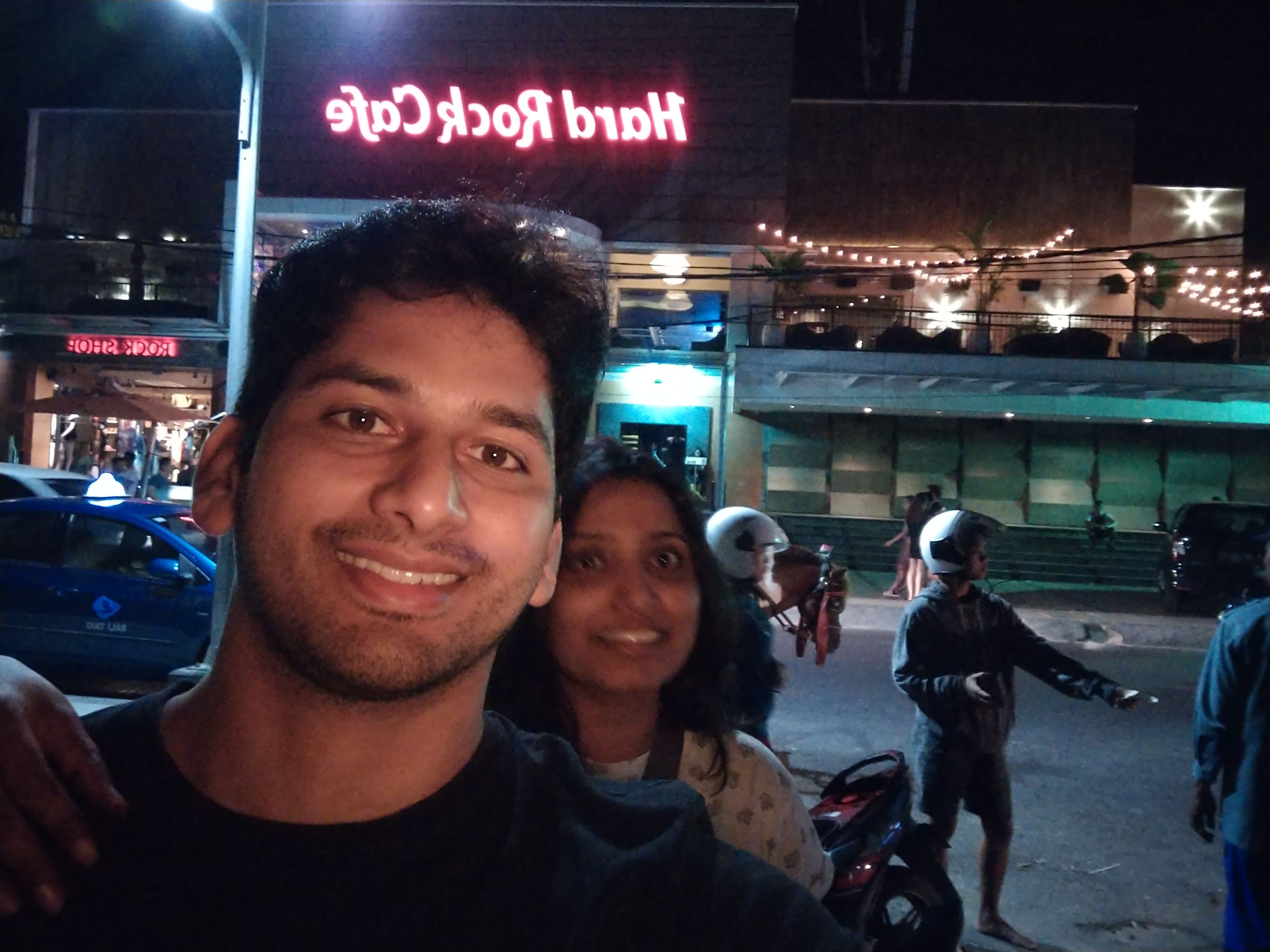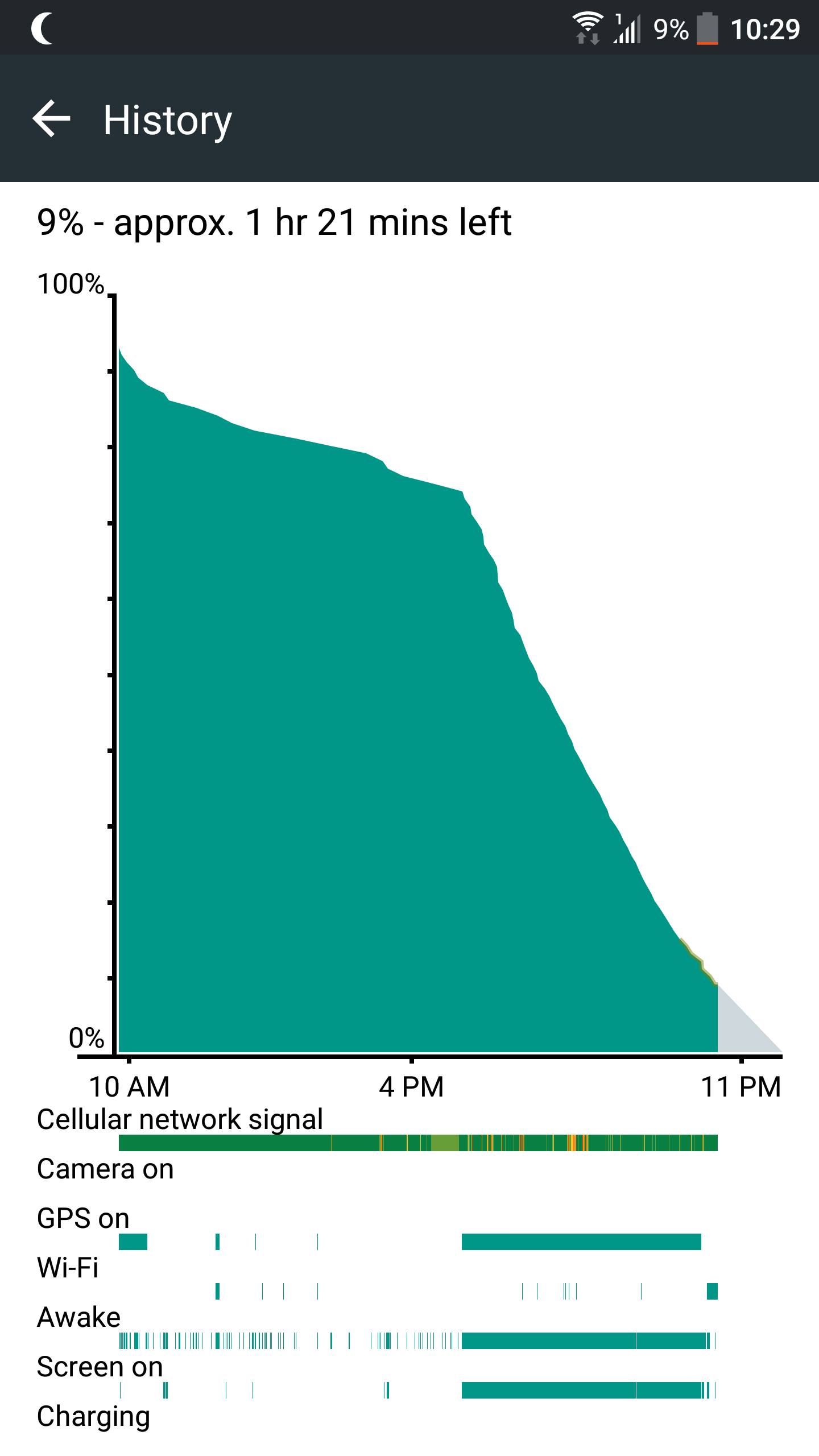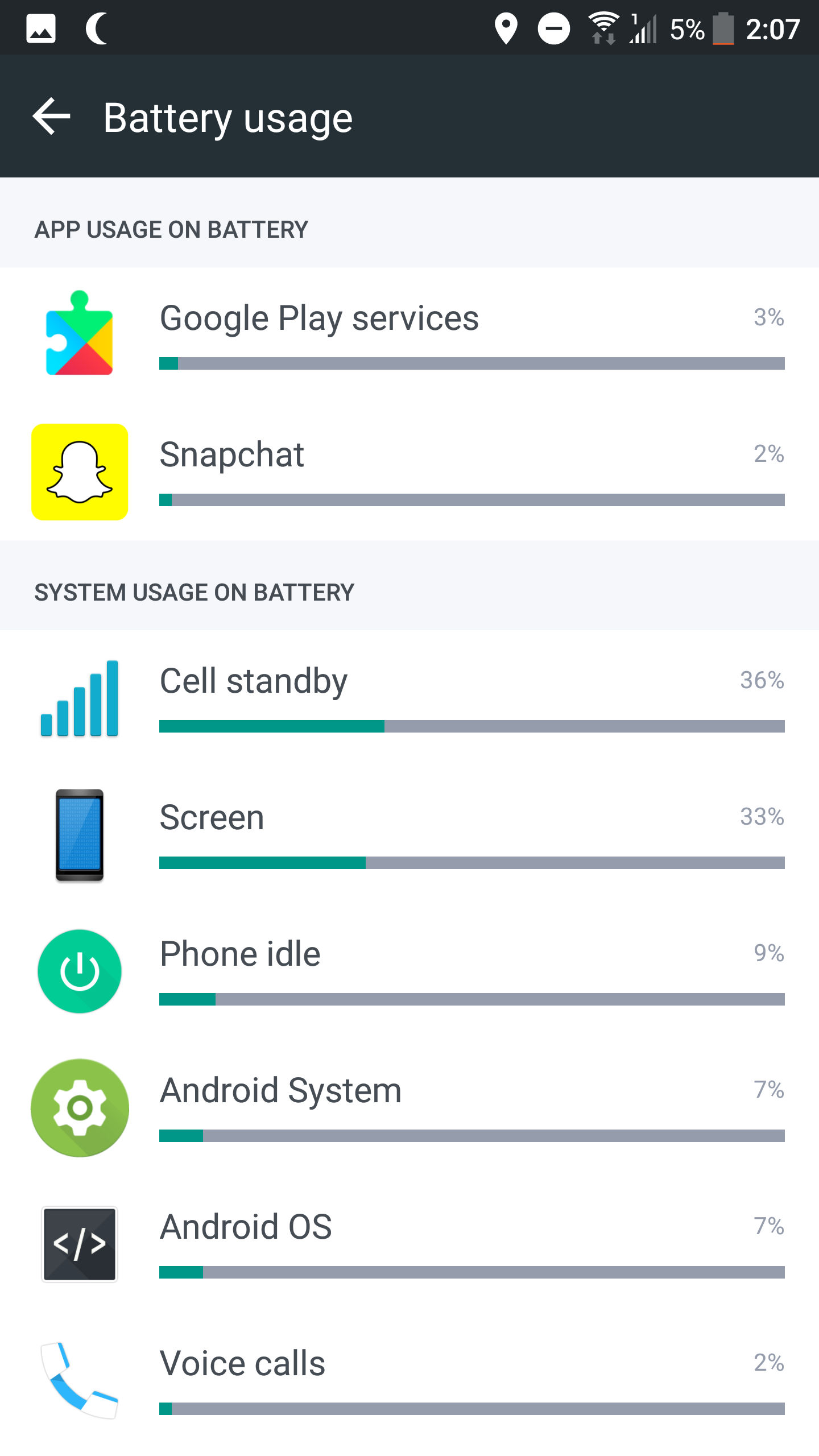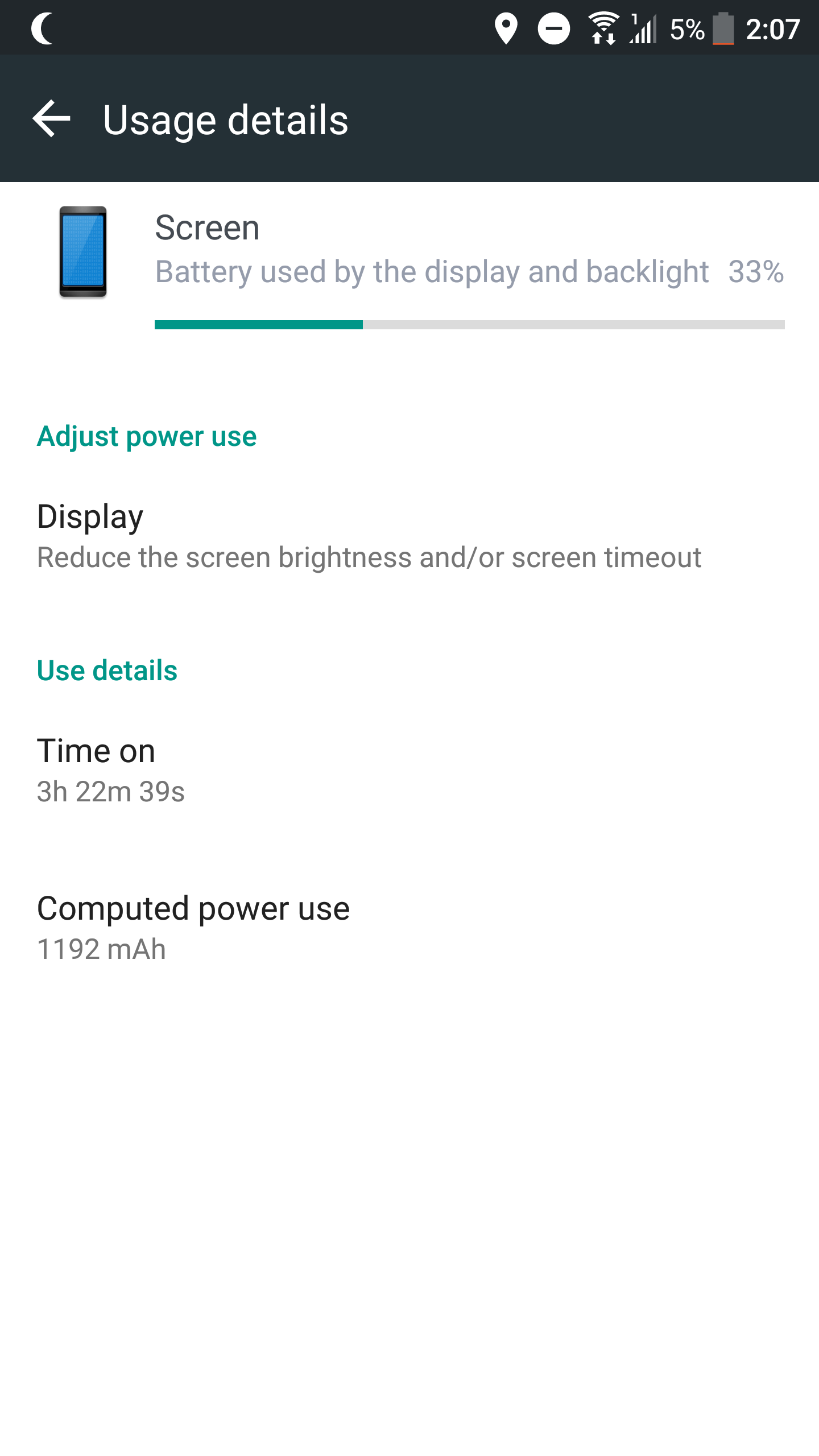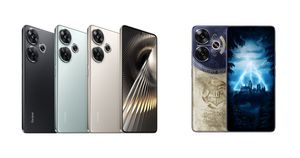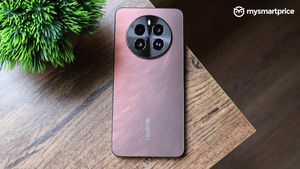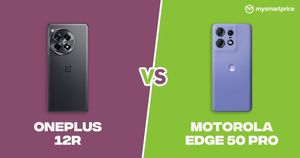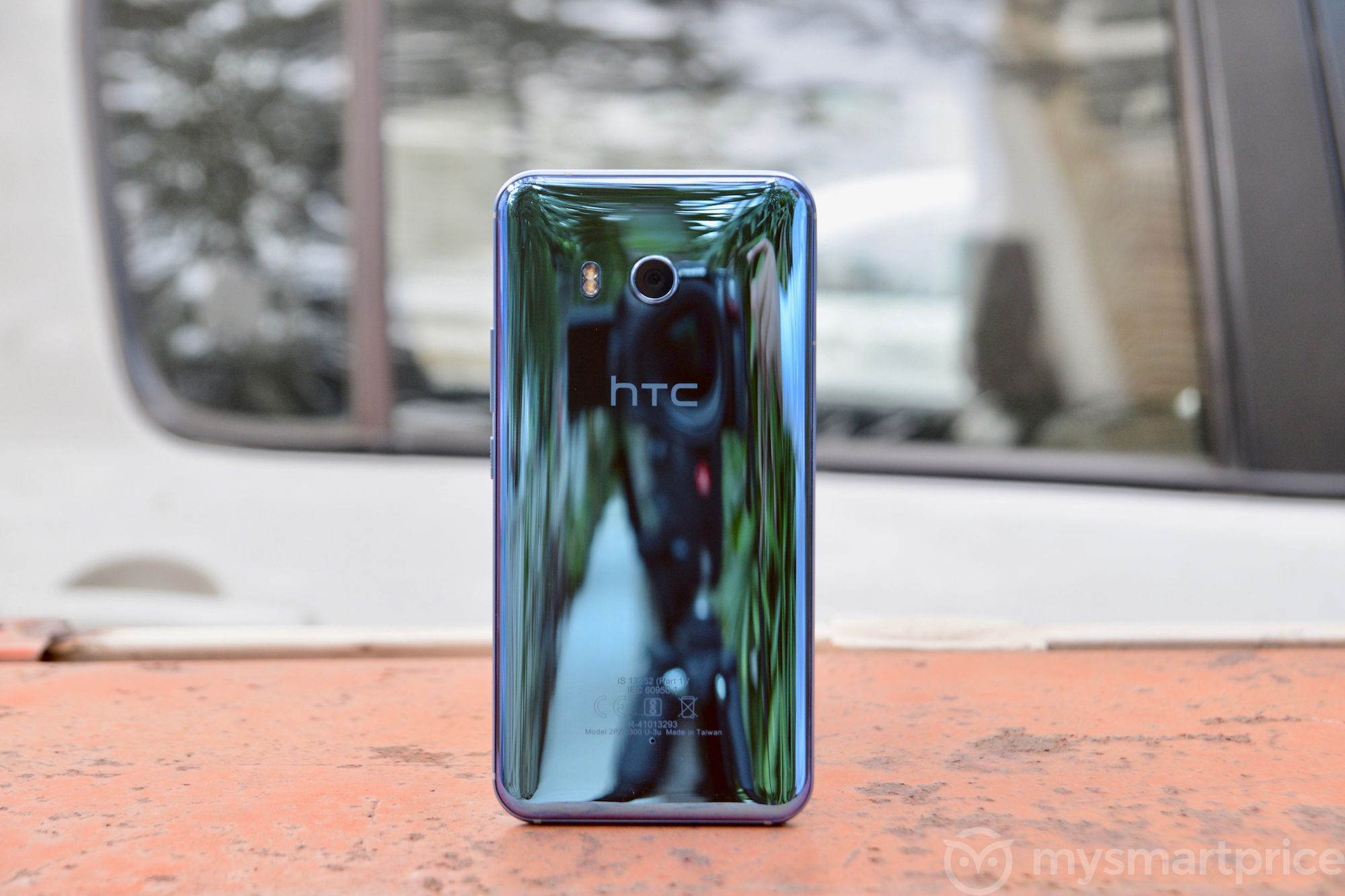
HTC isn’t the popular smartphone brand it used to be. The Taiwanese manufacturer was heading the smartphone charts back in 2012, but it failed to keep up the momentum over the last five years, ceding ground to Apple and Samsung. A lot of that was down to HTC’s own foibles: the brand’s questionable strategies relating to product launches and inadequate marketing efforts meant devices like the HTC 10 never really saw the attention they deserve. The company got a much-needed cash infusion from Google earlier this month, but it isn’t out of the woods yet.
HTC U11
Rs. 47,990What Is Good?
- Eye-pleasing, dust and water-resistant design
- Squeezable frame works well
- Very good cameras
- Smooth UI and great performance
- Amazing audio quality through stereo loudspeakers
- Bundled active noise cancelling earphones sound great
- Decent battery life
What Is Bad?
- Extremely slippery body
- No 3.5mm headphone port
- AirPlay connectivity never worked for us
- HTC Sense Companion isn’t very helpful
While the business side of things looks dire, things are rosier when it comes to the products themselves. HTC’s latest flagship, the HTC U11, for instance, is one of the best phones of the year. The phone is every bit as feature-rich as its rivals, and it looks stunning. It also has a unique trick up its sleeve. The phone is advertised to have the best smartphone camera in the market and has the same great audio quality as its predecessors. HTC has also managed to keep the price of the U11 sensible.
The HTC U11 certainly has the potential to be the best smartphone of the year, but whether you’ll actually buy one is down to a lot of external factors that aren’t under HTC’s control.
HTC U11 review: Physical Design & Squeezable Frame
Physical design has always been HTC’s strength, and the Taiwanese company is known for its industrial design. With the U11, HTC has moved from its all-metal smartphone design ethos to the in-fashion glass-and-metal sandwich design. The U11 has a metal frame, and the front and the rear of the phone are covered in Gorilla Glass 5 panels. It looks stunning, particularly in person (images don’t do the phone justice). The company calls the rear of the U11 “Liquid Surface”, which makes it really shiny and reflective. This is achieved by a manufacturing process that the company calls “Optical Spectrum Hybrid Deposition”.
Yes, the phone isn’t bezel-less like the Essential Phone, Galaxy S8, or the Mi Mix 2, but it looks really good, and is relatively slim. The slick design and reflective back certainly manage to attract a lot of eyeballs, so if you’re looking for something different from the usual metal designs, then the U11 is a great choice. The phone also has another trick up its sleeve: a squeezable frame that lets you squeeze the sides of the phone to undertake actions. The sides of the U11 have built-in pressure sensors, so you can literally squeeze the phone in your palm to do things like open the camera or access the Google Assistant. There’s a short squeeze and a long squeeze, and you can also customise the squeeze actions to open any app that suits your needs. You can also set the amount of force that is required to trigger these actions.
In my usage, I found that the squeeze action was generally very helpful. I personally found the level 3 pressure to be ideal for triggering the squeeze action, as I could open the camera without applying too much pressure. This is going to vary from person to person, though. The only problem I faced with the squeezable frame is that the phone was triggering the squeeze action every time I placed the phone in my car mount for navigation. As a result, the camera would launch when I was using Google Maps for navigation. Maybe HTC can offer a driving mode option that disables the squeeze action for a certain amount of time. Elsewhere, the capacitive navigation keys are located slightly lower than I’m used to, and had to move my thumb a lot to hit those buttons.
While the U11 ticks all the right boxes when it comes to the design, the durability of the phone remains a question. The phone is quite slippery, and I’ve seen it slide off flat surfaces like tables and beds in the two weeks I’ve used it. And the glass on the front and the rear doesn’t help much. There’s a fair chance that the glass would shatter if you drop the HTC U11, so I would advise you to invest in a case if you’re thinking of buying this smartphone.
HTC U11 review: Display & Audio
The 5.5-inch QHD Super LCD5 display on the U11 is an IPS panel. It’s covered by Gorilla Glass 5 for protection against scratches and scuffs. The display can get plenty bright, but not as bright as the Super AMOLED screens on Samsung’s flagship phones. Moreover, due to higher reflectivity, the sunlight legibility is not as good as the Galaxy S8. As such, it gets slightly harder to see what’s on the screen, especially under direct sunlight. I also noticed multitouch issues in the first couple of weeks, but those were fixed with a software update. The only thing that’s missing from the U11’s screen is mobile HDR: with the likes of the Galaxy S8 and LG G6 offering HDR10, its omission is noticeable on the U11.
HTC phones stood out because of their audio quality, but that isn’t the case any longer. The U11 features front-facing dual-stereo speakers, but strangely enough the phone lacks a 3.5mm headphone port. HTC tried to make up for the missing port by bundling quality in-ear-canal, active noise cancellation earphones that plug into the phone’s USB Type-C port. There’s a USB Type-C to 3.5mm dongle in the box, if you want to stick to your existing earphones or headphones. HTC claims that the phone supports AirPlay, but it never worked for us when we tried to play music through the U11 on the Apple TV, even after the software update.
The audio through the loudspeakers is satisfyingly full and loud. The phone never disappointed me while playing music or videos. The audio quality through the bundled U Sonic earphones was amazing, too. The noise cancellation quality can’t match dedicated earphones or headphones from brands like Bose, Sony, or Sennheiser, but if you don’t have any other noise cancellation earphones already, you’ll appreciate the U Sonic earphones while travelling. You can switch between Music and Theatre modes, depending on what you’re listening to on the U11. They’re certainly the best bundled earphones by a significant margin.
HTC U11 review: Performance & Software Experience
HTC made sure its flagship phone is as good as any competing product out there when it comes to hardware specifications. The U11 is equipped with a 64-bit, octa-core Qualcomm Snapdragon 835 chipset. There’s 6GB RAM and 128GB of UFS 2.1 internal storage, at least in India. There’s a microSD card slot as well. All of this makes the phone fast and fluid. Apps open instantaneously and all the animations and transitions are smooth.
Coming down to the software part, the U11 comes with Android 7.1.1 with HTC’s Sense UI on top of it. HTC has toned down the number of custom apps that come preloaded on its phones over the years. There are a few custom widgets, which are very well-designed and carry a minimalistic theme (except for the one weather widget from the HTC Sensation days). Apart from the essentials, preloaded apps on the U11 include Boost+, HTC Sense Companion, UA Record, Viveport, and Zoe Video Editor.
Boost+ can clear cache, memory, put unnecessary background apps to sleep, and lock apps. It can remind you to remove junk data from your phone when it reaches 1GB. It also suggests you to “optimise” some apps that have been hogging resources in the background. Apart from Boost+, which essentially is a utility to maintain the phone’s performance, I did not find the other apps compelling enough to use them regularly.
The HTC Sense Companion is an AI-powered digital assistant that learns from your phone usage patterns and prompts you to charge your phone, set an alarm for the next day, and shows your daily step count. There’s a data transfer suite that assists you in transferring data from your old phone to the U11 when you’re setting it up for the first time. The fingerprint sensor is fast, and I didn’t face any problems with it.
Thanks to the glass back, the cellular and Wi-Fi signal reception on the U11 was rock solid. However, I faced some issues while using Google Maps on the phone. It could be related to the compass or GPS since the phone couldn’t detect where I was facing. It wasn’t a persistent issue, though. Maybe a software update could fix this bug. HTC has also announced that the phone will be updated to Android 8.0 Oreo, but there’s no timeline as to when the update will be available.
HTC U11 review: Camera
The camera quality on a smartphone is what’s most important to most consumers these days, and a differentiating factor among brands. Currently, Apple and Samsung lead the fray when it comes to camera prowess, but Google managed to show everyone up with the Pixel and Pixel XL. This year, Samsung and HTC relied on multi-frame capturing technique, with the U11 using something called HDR Boost to improve the image quality.
The 1/2.3-inch Sony sensor in the U11’s camera features dual-pixel phase-detection autofocus, optical image stabilisation, f/1.7 aperture, and a dual-tone flash. It can record 4K videos as well. HTC also proudly advertises the U11 as the best smartphone camera based on DxOMark’s review score of 90. But does that mean the U11 is really the best smartphone camera out there? Well, in my testing, the phone can take some really good shots, but its performance is not as consistent as the iPhone 7 or the Galaxy S8.
The resolved detail is aplenty and the images look sharp. There’s no corner softness, something that’s generally found in Sony phones. The dynamic range is great, but the Auto HDR feature didn’t always activate by itself. I had to trigger the HDR mode manually when taking shots under direct sunlight. Also, the effect of the HDR mode wasn’t as pronounced as one would find on the Galaxy S8. Colour accuracy is maintained throughout across diverse shooting modes, and the colours are neither dull nor oversaturated.
When it comes to videos, the U11 was on the back foot. The stabilisation isn’t as good as other phones, especially the Pixel and the Galaxy S8. The detail itself is great, though, as is focusing speed and accuracy, thanks to dual-pixel autofocus mechanism. The phone can record 4K videos at 30fps and 1080p videos at 30 or 60fps (this feature was released as a software update at a later stage). Many phones that can record 4K videos lose detail while recording 1080p videos, but not the U11. The video recording performance was consistent across the board.
The phone can also record slow-motion videos as well. Audio quality in the video was also an area HTC focused on. The phone uses dual microphones to record the audio, and a feature called Acoustic Focus adjusts the audio gain when you zoom while recording a video, so the sound coming from the subject will sound clearer. However, most people won’t ever use Acoustic Focus. If you want to tinker with the camera settings, there’s a pro mode that lets you alter things like ISO, shutter speed, focal length, white balance, and exposure.
HTC’s last generation flagship smartphone, the HTC 10, had a 5-megapixel front camera with autofocus, OIS, and F1.8 aperture. However, the company has dropped OIS and autofocus this year and increased the camera resolution. It has used a narrow aperture too (F2.0). Even though it lacks autofocus, the focal length of the front-facing camera is correctly tuned for an arm’s length. Selfies are bright and sharp in daylight, but the quality drops gradually as the light starts to fade.
The HTC U11 comes with a 3,000mAh non-removable battery that supports Qualcomm’s Quick Charge 3.0 fast charging technology. In my usage of over a month, the phone consistently lasted over a day. The phone was connected to 4G LTE and Wi-Fi networks with multiple email accounts and IM apps synced.
I was able to get around five hours of screen-on time on the HTC U11. However, this did not include connecting to wearable devices such as a fitness tracker or a smartwatch of any kind. If you plan to use such a device, battery life will be slightly shorter. When it comes to topping up the battery, the phone supports Quick Charge 3.0. The supplied charger can top up more than half the battery in just 30 minutes.
HTC U11 review: Conclusion
The HTC U11 is one of those phones that get all the basics right without going overboard on features. It has an eye-catching design, great camera and audio quality, a sensibly-sized display, smooth and fast performance, and good battery life. Even the squeezable frame works well most of the times.
The only thing that I don’t like about the U11 is that it is extremely slippery, which makes it susceptible to drops. The omission of a 3.5mm headphone jack is also an annoyance. That said, HTC has managed to keep the price lower than flagship smartphones from brands such as Apple, Google, Samsung, and Sony.
However, not many people will be lining up in front of stores to pick up the phone. That’s down to two reasons: plenty of great alternatives, and HTC’s diminished resources, which prevent the brand from marketing the phone as widely as it would’ve liked. That’s a shame though, because the U11 is one of the best phones of 2017.
